2. Like Making a Puzzle
When I first saw the actual Nintendo 3DS XL, I was struck by how the LCD occupies quite a large area of the entire face. Put a different way, the “picture frames” so to say, of the LCDs are incredibly narrow compared to previous Nintendo hardware.
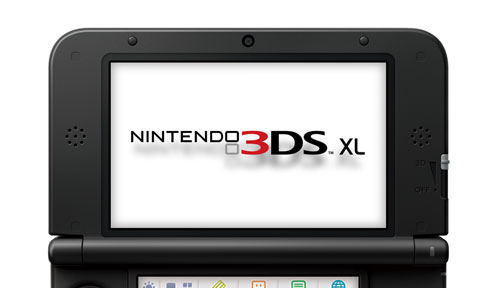
That, too, is quite different from previous hardware.
Of course, when it comes to other types of electric devices, lots of products have even smaller frames, but as for game systems within Nintendo’s standards and conditions, I was impressed at how narrow it is. Today, I really wanted to ask how you did that.
The key was probably the speakers.
Yes. Speaker size influences frame design, but the first design picture that came to our design team was already such that the same speaker as in Nintendo 3DS wouldn’t fit. (laughs)
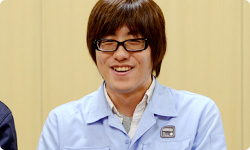
(laughs)
As much as possible, we wanted to achieve what was pictured, so we searched for small speakers, and considered moving the speakers to the bottom half. We modified the Nintendo DSi XL and put the speakers by the buttons, and checked how it sounded by listening to the opening theme music from Dragon Quest.
But if the speakers get smaller or sound comes from someplace other than the screen, then the sound may have half the effect.
Yes, music plays an important role in games, so we had a number of speaker makers introduce a variety of technologies and heard about some thinner, elongated speakers.
Oh, instead of round ones.
Right. When we first heard about them, they still weren’t practical, but they would really put out sound, so we thought they just might work. Then we did a lot of research along with the manufacturer and came up with the speakers that we used on the final product.
You made custom-sized speakers to fit within a limited, narrow space. How do they sound?
On a graph of acoustic characteristics, they aren’t exactly identical to the Nintendo 3DS speakers. The speaker size is smaller than that of the ones on Nintendo 3DS so sonically it had a disadvantage. But by fine-tuning the structure and capabilities of the speakers itself, and then optimising the sound with the software, we tried to have them sound like the ones on Nintendo 3DS as closely as possible.
I see. A lot of effort was put into it.
It isn’t something you can see, but we’ve done quite a lot.
Unless you really worked on areas aside from the speakers too, you wouldn’t have been able to accomplish so much, so everyone concentrated on it and did their best.
Adding to what we said about the frame, we made the base colour black for everything on Nintendo 3DS in order to accent the stereoscopic 3D. But the screen this time is big enough that the size alone can really immerse you, so we could use colouring besides black.
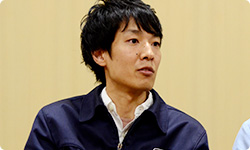
If you’re concentrating, a screen this big is plenty, even without relying on visual correction by the frame.
That’s right. As for making the system as a whole thin, the resin is important. With a conventional plastic resin, it always gets thick, but this time we used a thin resin that’s hard and provides good protection.
Does a hard resin make it difficult to shape?
Yes, and it’s hard to bring out the colour.
Really?
When you open the Nintendo 3DS XL system, for the surface material of the upper side, we’re using a new resin called nylon GF55.
GF stands for glass fibre, right?
Yes. It’s a plastic reinforced with fine glass fibre.
So does the name GF55 mean that it’s 55% glass fibre?
You got it. Usually, you bring out the colour of the resin and then paint on it to draw out nice colours, but with GF resin, the original colouring doesn’t come out well.
With 55% glass fibre, don’t machining and decoration also get difficult?
Yes, they do. So the normal processes just don’t work! (laughs) You spray on paint to serve as a nice base colour, and then spray on a second coat for decoration.
Hmm, I didn’t know that.
That does mean that the painting takes some work, but without this material, we couldn’t have worked out this balance of it being thin, but strong at the same time. And when it came to the hinge…
Yeah. At the thinnest parts it has a thickness of less than one millimetre.
And we completely rethought such aspects as clearance when assembling the various elements, performing incredibly detailed simulations for tolerance analysis.
The most difficult terminology ever are popping up in today’s “Iwata Asks”! (laughs)

(laughs)
First, clearance basically means space - in this case, the space for parts to move. Clearance means that there is enough space for this part and that part not to touch each other. Have I got that right?
Yes, that’s right.
And tolerance, since it is nearly impossible when mass-producing parts to make everything exactly the same size as in the designs, is a value you decide on, saying, “This much is acceptable.” When assembling numerous parts, that difference could have an effect on the whole thing, so tolerance analysis is calculating ahead of time to make sure that doesn’t happen.
That’s it. Thanks! (laughs)
If each piece has tolerance, then every little difference could add up to quite a lot.
(nodding emphatically)
We talked for hours, saying things like, “Can we make this 0.1 millimetre smaller?” (laughs)
For hours?
Quite a lot. Suppose there’s a 0.3-millimetre clearance, and you take 0.1 from here and 0.1 from there, that makes 0.5, so we’d think, “We might be able to get an FPC through here.”
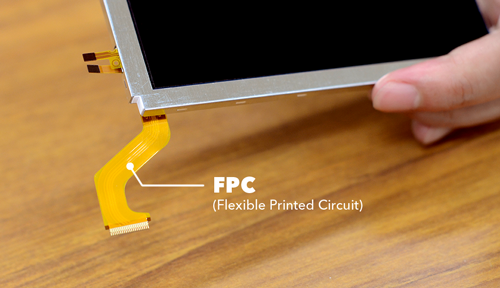
I heard about FPC (flexible printed circuit) for Nintendo 3DS, too. It’s a thin cable that connects various separate electrical circuit boards.
It’s this. (looking at a transparent model)
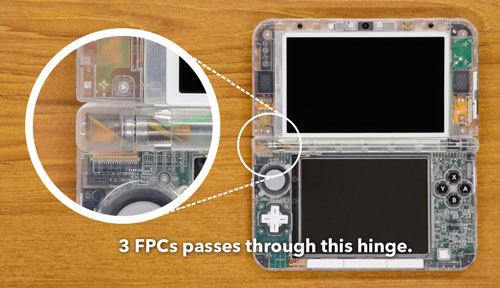
For example, in order to electrically connect the upper and lower parts at this hinge, there’s an FPC wrapped around in there. Am I correct in thinking that there are three FPCs in here?
Yes, there are three.
You say it like it’s no big deal, but it’s really not easy to do! (laughs) Devices like this really are made like a puzzle, with the most precise calculations.